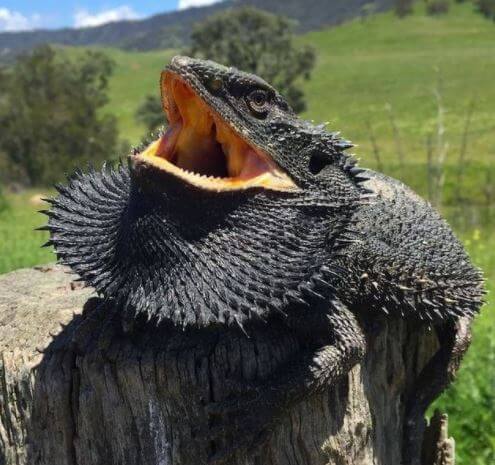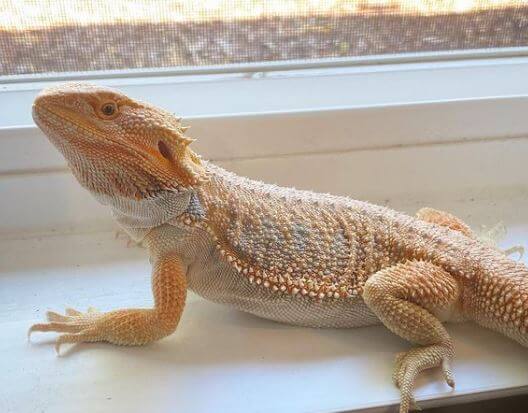Have you ever wondered how high can bearded dragons jump?
Owning a bearded dragon is no longer a strange thing for animal lovers, especially those who like reptiles.
But keeping any animal can bring curiosities, worries, and questions, especially if this is your first time raising a new species.
In that case, you have to find out everything from their habitat, food to their behavior.
The bearded dragon has a gentle, curious nature and seems to be quite fond of human company.
Taking care of these lizards is not too fussy.
But sometimes, these kids will give you a headache when jumping from place to place and end up hurting themselves.
So, let’s take a look at some of their life features, especially their jumping behavior. How high can bearded dragons jump?
Related Posts:
- Why Is a Bearded Dragon Trying to Escape His Cage?
- Can Bearded Dragons Eat Rosemary?
- Bearded Dragon vs. Chameleon: Facts and Differences
What Are Bearded Dragons?
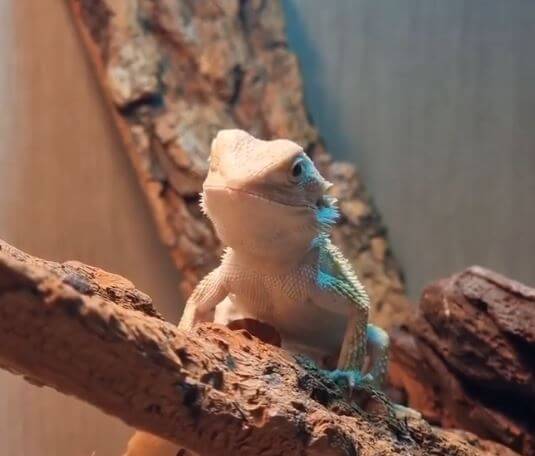
Bearded dragons are native to Australia and they are still found in the wild today.
They started gaining popularity in the mid to late 1980s and gradually became one of the most loved pets among reptiles.
Although this animal does not have too many special needs, there are a few points you should keep in mind to keep your pet safer and happier.
Usually, bearded dragons are easy to tame and calm animals. However, they tend to be aggressive as they get older and will react when provoked.
Can Bearded Dragons Jump?
The answer is yes, they can jump. Usually, they have a tendency to jump from higher to lower places.
Therefore, do not decorate the interior of their tank too high. In unfortunate circumstances, your little beardie can jump and break a bone or injure themselves.
So, can bearded dragons jump out of their cage? Although this behavior is not common, they have the ability to jump out of the tank for a variety of reasons.
1. Stress
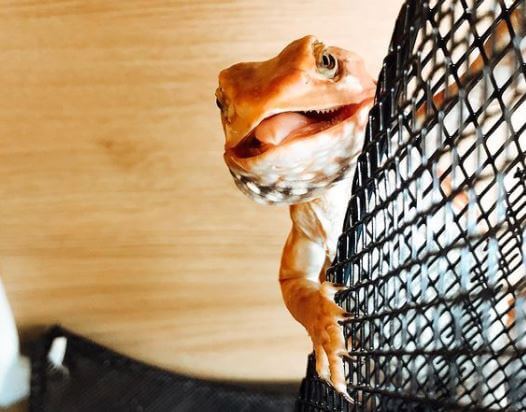
In some cases, when you bring your pet home or move to a new space, it can be strange and stressful for your pet. Bearded dragons are no exception.
Not every pet can become familiar and comfortable with a new owner or space.
Try to increase the animal’s trust in you.
You can start with small actions like feeding or misting.
If your beardie is too cautious, first put the food closer to it and gradually pull it closer to you.
If you’ve built up his confidence, you can gently pet and stroke him slowly. As this lizard gets used to you, you can move on to more difficult actions like lifting him out of the tank.
Remember to gently place your hand to lift the pet’s entire belly to help him feel more stable and secure.
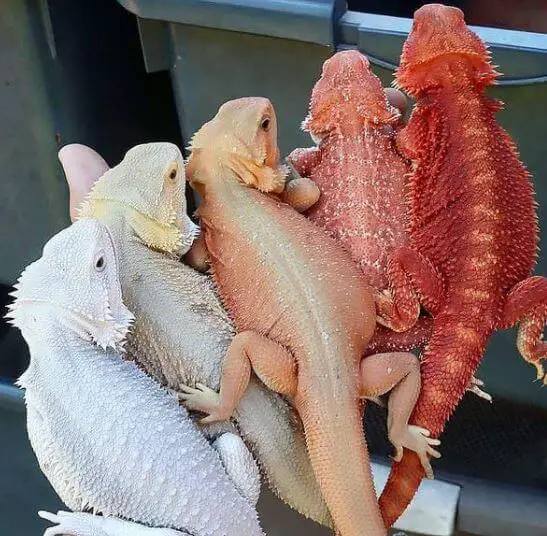
Will my bearded dragon jump off my shoulder?
Of course, it is possible.
Again, it has a tendency to jump from high to low.
Although the fact that a bearded dragon jumped off the shoulder is not common, just a random factor can trigger it.
Do you feel comfortable seeing your pet break a bone, dislocate a bone, or worse, land on his head and break his neck or spine?
Therefore, remember to keep a close eye on your pet when petting, playing, or feeding them.
The key is that you have to take your time and be patient.
2. Fear
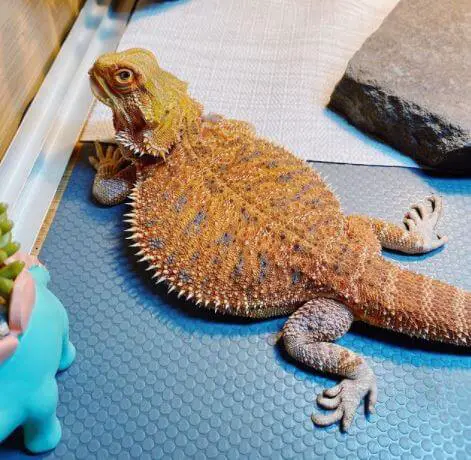
Your bearded dragon may panic if you have another animal in your home or have too many bearded dragons in the same tank.
This will cause them to behave strangely to try to hide, escape, or in most cases, fight each other to keep the territory.
If you keep more than one bearded dragon, remember to keep them separately to avoid competing for territory.
They can fight and cause damage to the body and also cause unnecessary stress.
In case you have another pet and your lizard is still behaving strangely even without being together, it would be smart to buy or make it a hiding place.
It could be a cave, a large tree, or even just a ledge would suffice.
3. Lack of Fear
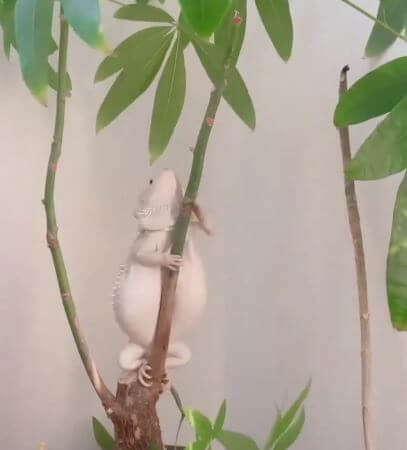
Some are fragile, easily frightened, but for some, fearlessness is a problem.
During childhood or adolescence, bearded dragons often have the curiosity to learn about the world around them.
They can go anywhere and jump down from anything, and this can also lead to unnecessary regrets.
So, remember to arrange and decorate your pet’s shelter safe enough to avoid potential dangers.
4. Food
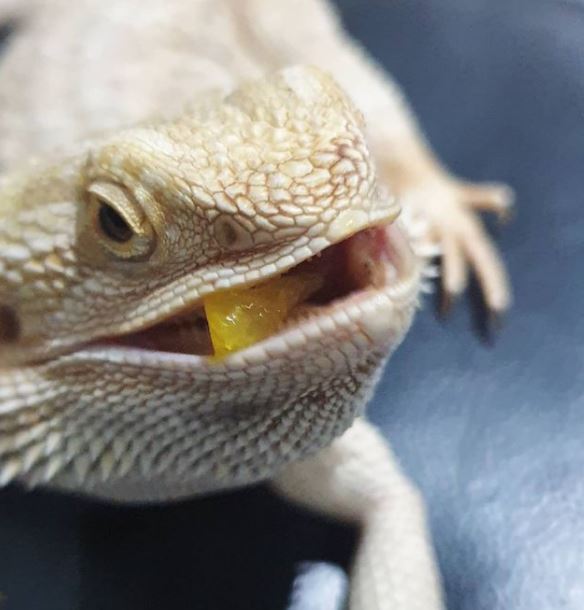
Food is always something to get everyone excited about.
In some cases where the food is too far away or you simply forgot to close the tank lid while preparing food, your beardies are likely to jump out to get the food.
Therefore, try to keep the feeding bowl low and keep an eye on your pet during feeding time.
How High Can Bearded Dragons Jump?
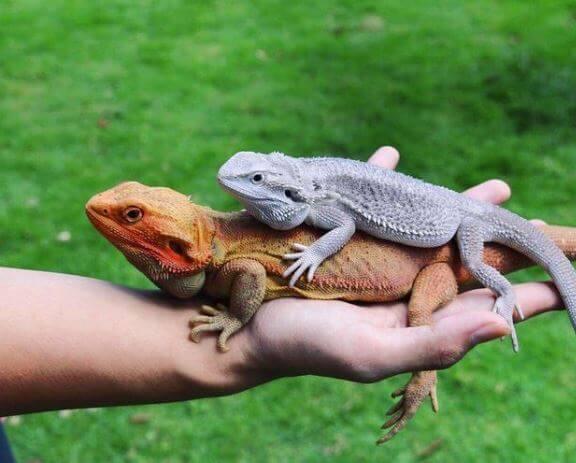
There is no exact number to the question, “How high can a bearded dragon jump?”
It can range from 8 to 10 inches, but in some cases, it can jump up to 18 to 20 inches, even afoot.
How high bearded dragons can jump depends on their age, gender, health, and diet.
But are you perfectly fine with your little 22’’, 500-gram adult dragon regularly jumping off things such as the bed, couch, and desk?
To keep your bearded dragon as safe as possible, remember that the interior of the tank should be kept low to avoid potential accidents.
How to Keep Your Bearded Dragon Safe When Jumping?
If by now you have the answer to how high can bearded dragons jump, I assume the next appropriate question would be how to keep them safe when jumping.
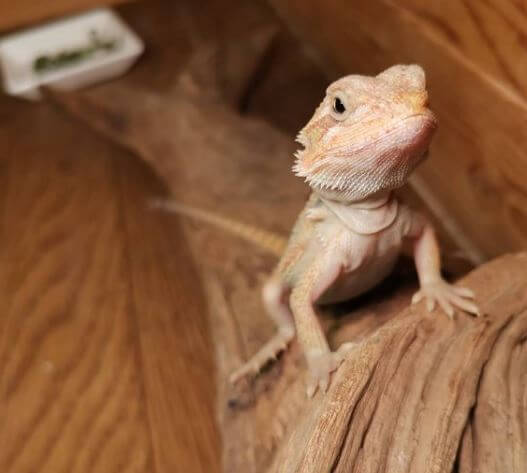
1. Living Standard
a. Environment
Keep your lizard in a large cage. The absolute minimum enclosure size for a tank should be around 48″ x 24″ x 24″ (approximately 120 x 60 x 60 cm).
This vivarium will allow your dragon to have enough space to be comfortable and reduce stress.
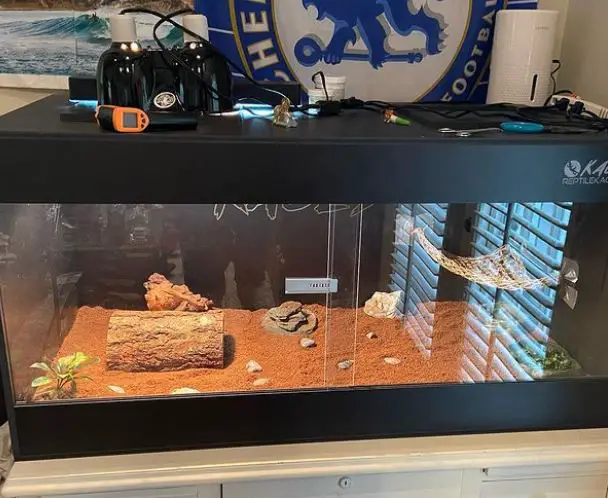
Due to the instinct to mark the territory, the bearded dragons can fight each other.
Therefore, it should be only one bearded dragon per cage.
Also, the cage should be decorated with trees or rocks.
It is best to decorate so that there is room for the bearded dragon to climb, sunbathe, as well as hide when needed.
b. Temperate and Light
You should have a dedicated heating lamp to adjust the appropriate light and temperature.
The ideal temperature should be 35 to 38 degrees Celsius during the day and 21 to 26 degrees Celsius at night.
Thermostats are not always accurate, so it is essential to record the temperatures daily.
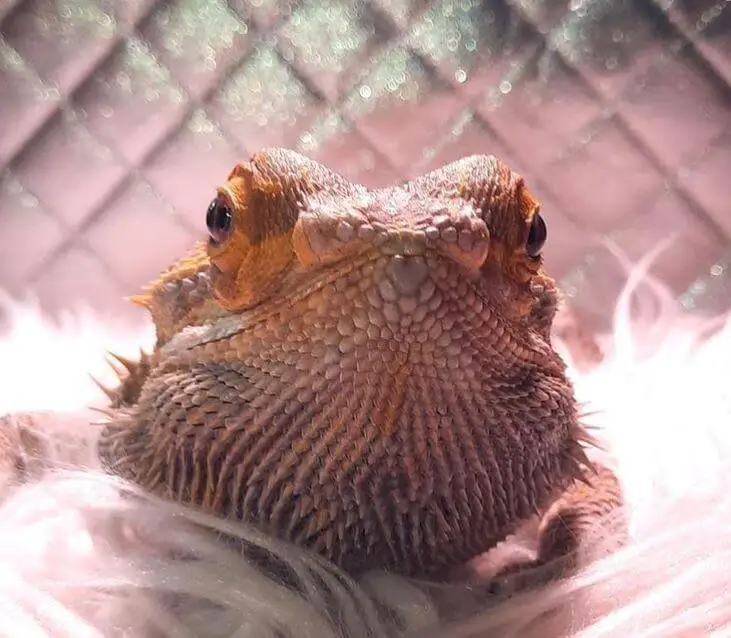
Natural daylight is very important for reptiles. They use it for their day and night patterns.
Both UVA and UVB in sunlight are essential.
Bearded dragons use UVA light for their color vision and UVB to store and use calcium.
UVA can pass through glass windows but, unfortunately, UVB can’t. Therefore, reptile UVB lamps must be used inside the vivarium.
c. Cleaning
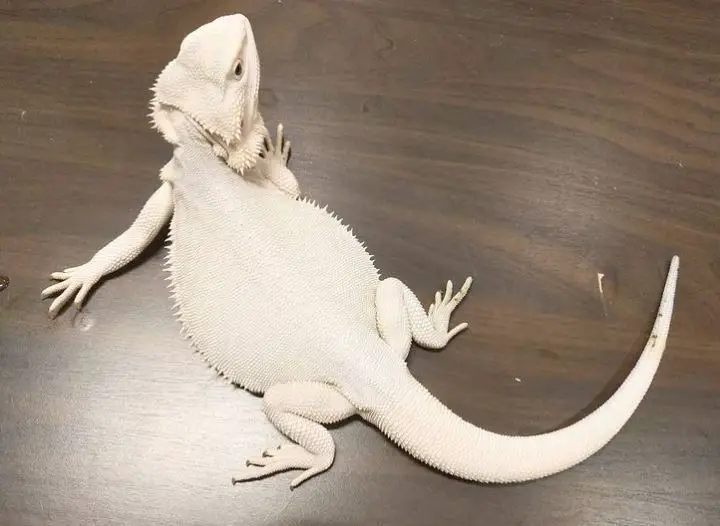
Poorly maintained and cleaned tanks can become a health hazard for your pet.
Not only can it cause respiratory infection if the air is not clean, but also affect the digestive system and other organs.
Bearded dragons can carry Salmonella, so don’t spread it to your pet by washing your hand before and after cleaning.
Also, don’t forget to remove any leftover food from the tank after feeding time that may become worse and affect your pet’s health.
Because of all those conditions, bearded dragons should be kept in an enclosure secure and free from hazards.
They shouldn’t be let out of the vivarium and live in human space for a long time.
2. Diet and Nutrition
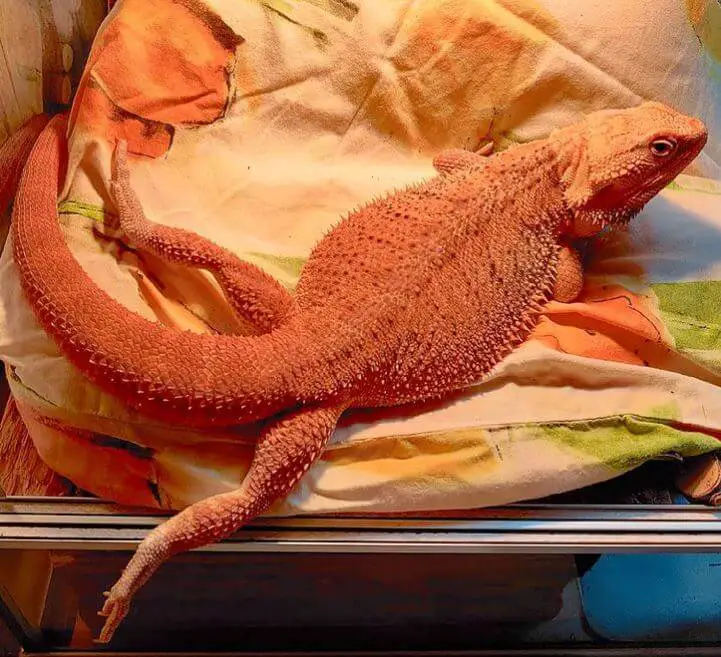
They are omnivorous animals, which means that they get the energy to sustain life from the food source of both insects and vegetables.
It will be interesting to watch them quickly grab the food with their tongue and handle it in a blink of an eye.
You can feed them most insects from crickets and cockroaches to worms such as mealworms, earthworms, superworms, waxworms, etc.
Note that you should not only feed them insects but have to balance between vegetables and protein.
3. Other Things to Pay Attention to
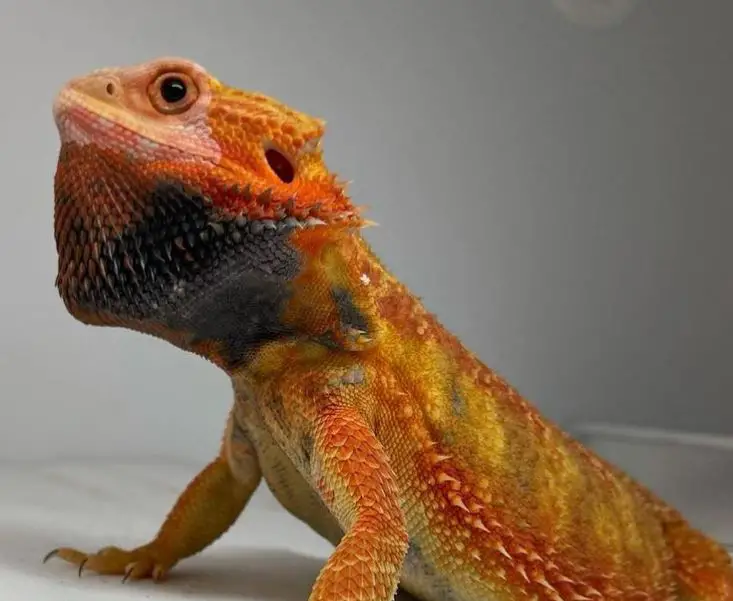
Remember how we talked about how high can bearded dragons jump?
Now that we know it can jump much to anything, this is not about how high can a bearded dragon jump anymore but rather how can you make it safe for them to jump.
Let’s talk a little bit about safety precautions.
a. Interior Decoration
Keep all the trees, rocks, and everything in their tank not higher than their body length.
You may thicker the sand to reduce the impact.
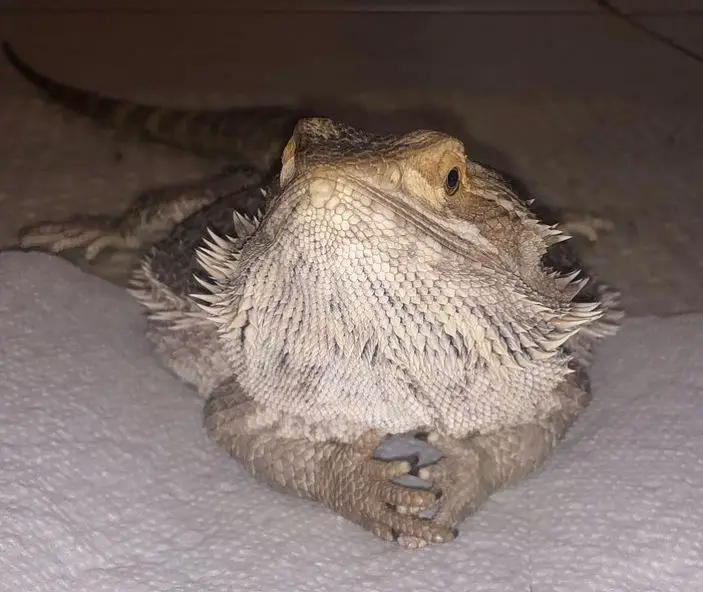
b. Exterior Decoration
Consider carpeting your floor or the place you usually let them hang out.
Don’t let them climb too high or be on their own for a long time.
Remember to always keep your eyes on them and put them back in the vivarium after playing, petting, or feeding them.
Frequently Asked Questions About Bearded Dragons Jumping
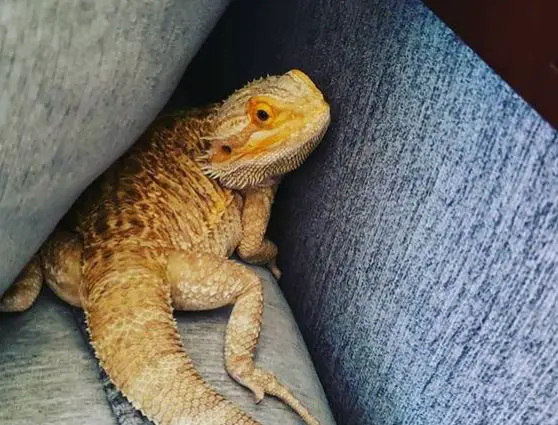
1. Can Bearded Dragons Be Out of Their Cage?
Although they can, we advise you to not let them out for a long time.
Because of their standard and specific living conditions, if they live in a human condition for too long, it may affect their health and risk their life.
2. Can Bearded Dragons Jump From High Places?
Of course, they can. Bearded dragons have poor depth conception, so they don’t really know how high they are.
So, it isyour job to make sure that they are not in a very high place because one unfortunate jump can risk your pet’s health or even their life.
3. Will My Bearded Dragon Jump Off My Bed?
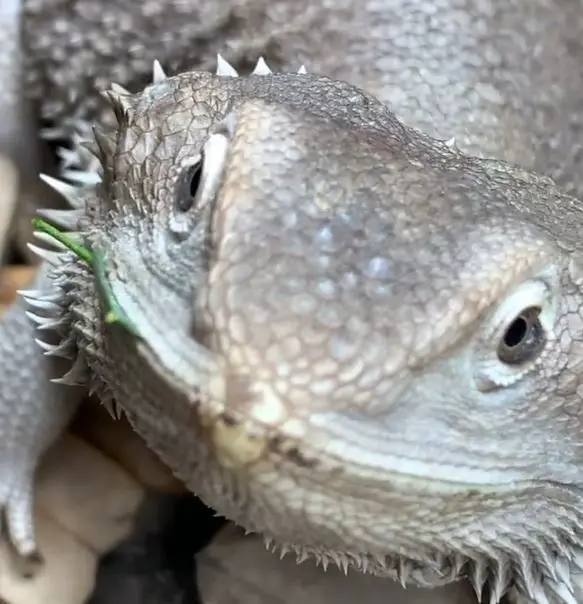
It can happen. Bearded dragons tend to jump from high places to low places.
So, for your pet’s safety, choose a low bed.
If your bed is high, you can consider carpeting the room.
Or at least create a soft surface to reduce friction for your pets in the places they often play.
Although a carpeted floor cannot prevent your bearded dragon from falling from the bed in an unusual position, it can reduce the impact somewhat.
However, we still advise against allowing them to jump from anywhere higher than their body length.
4. Can Baby Bearded Dragons Jump?
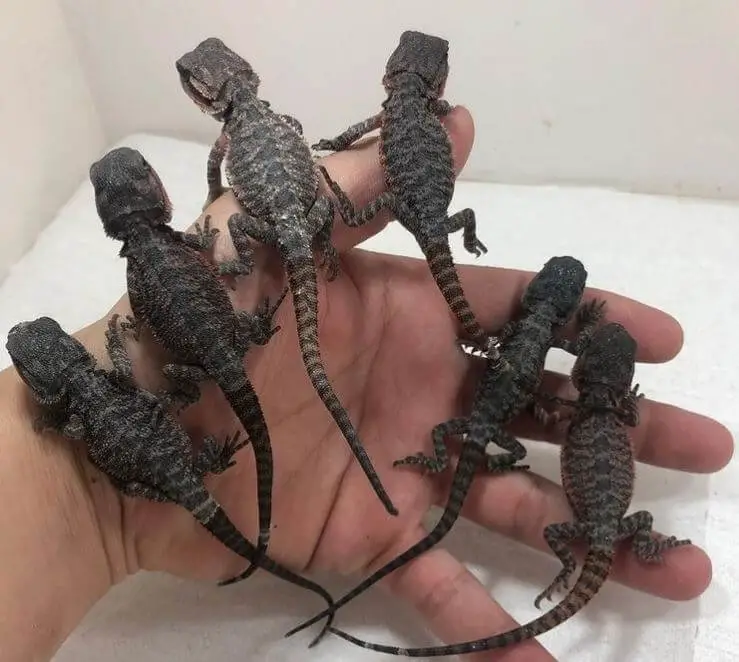
Baby bearded dragons can jump, and they will. Baby dragons can jump pretty well because of their curiosity about the world around them.
But like dragons of all ages, their depth conception is pretty bad that’s why it is even more dangerous for a curious, fragile young baby beardie to be out and jump in high places freely.
5. Can a Bearded Dragon Eat a Spider?
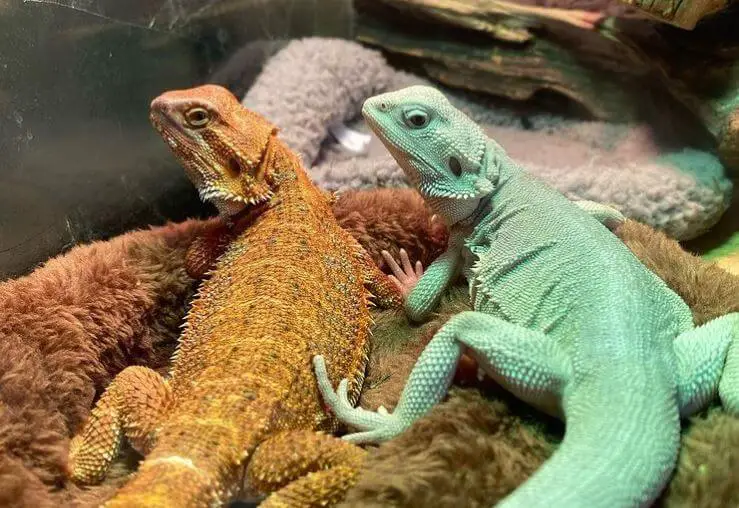
Yes, as long as the spider is not poisonous.
Although a fairly common food source for lizards, spiders are usually only used to feed geckos and chameleons.
They should not be used as the main food source for bearded dragons.
In addition, you should completely avoid the following 4 types of spiders because they carry many toxins and can cause poisoning for your beardie.
- Brown recluse
- Black widow
- Hobo spiders
- Yellow sac spiders
6. What Happens If My Bearded Dragon Eats a Spider?
Look around at your pet and other pets in the house, if any, to see if they have been bitten.
The bite may not cause immediate symptoms, but it can have serious consequences.
If you are too far away from the vet or it is not convenient to go to the vet, you can closely monitor your intestinal or skin symptoms.
However, we still recommend that you seek veterinary help as soon as possible.
7. Can Bearded Dragons Eat Beans?
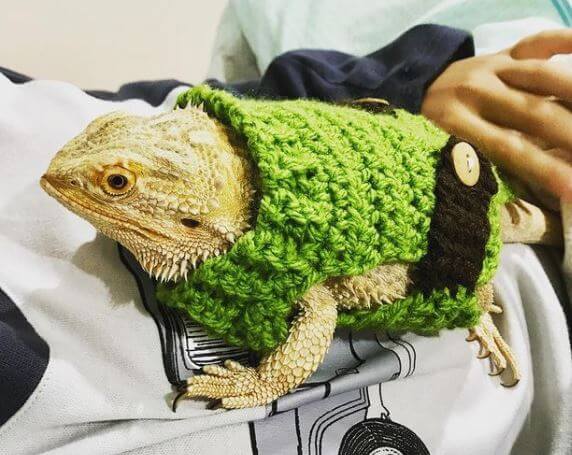
Most beans are okay to feed to your pet occasionally. Remember that your beardie is an omnivore.
However, beans lack some other vitamins and minerals for the body, so beans should not be used only as a plant source.
Therefore, you should only occasionally feed your pet beans, find other green sources, and get a balance of nutrients from animal and plant sources.
Conclusion
Can bearded dragons jump? How high can bearded dragons jump? How to keep them safe when jumping?
There are so many questions you may ask yourself when you’re new to raising bearded dragons.
There is no ideal way or specific way to apply to every pet, so consider your decisions and care at every step.
I hope our topic can give you a general idea to help you with your life living with your loving bearded dragon.
Key take away points on whether bearded dragons can jump or not:
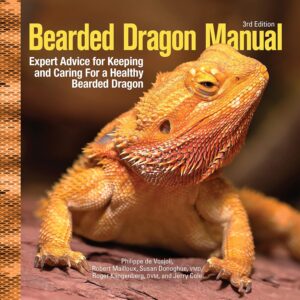 Bearded dragons are known for their active behavior and mobility within their enclosures. Here’s a concise breakdown about their jumping capabilities in bullet points for quick reference:
Bearded dragons are known for their active behavior and mobility within their enclosures. Here’s a concise breakdown about their jumping capabilities in bullet points for quick reference:
1. Natural Behavior:
- Limited Jumping Ability: Bearded dragons are terrestrial reptiles and are not natural jumpers like some other reptile species.
- Short Distances: They can make small hops or short leaps, especially in the wild to navigate small obstacles or evade predators.
2. Limb Structure:
- Limb Design: Their anatomy isn’t built for extensive jumping; their bodies are better adapted for walking, climbing, and basking.
- Limited Leg Power: Their legs are more suited for mobility on the ground rather than propelling them into long or high jumps.
3. Enclosure Behavior:
- Exploration: They might exhibit brief jumps when exploring their enclosure, attempting to climb or navigate small obstacles.
- Risk of Falls: While they may attempt short jumps, their cautious nature minimizes the risk of significant falls within their habitat.
4. Exercise and Activity:
- Physical Activity: Bearded dragons benefit from exercise but usually engage in more ground-based activities like walking or climbing.
- Limited Elevation: Their inclination towards ground activity limits their desire or ability to jump to higher elevations.
5. Careful Climbing:
- Cautious Climbers: They tend to climb cautiously and prefer lower perches or structures rather than attempting high jumps.
- Risk-Averse Nature: Their cautious behavior minimizes the likelihood of risky jumps, especially from elevated areas.
6. Caution in Handling:
- Handle with Care: When handling a bearded dragon, it’s essential to be gentle and avoid sudden movements to prevent them from leaping out of your hands.
- Low Risk of Jumping: Generally, they’re not prone to jumping out of your grip if handled calmly and securely.
7. Environmental Factors:
- Enclosure Setup: Ensure the enclosure’s height is appropriate, with no significant drops or unsafe heights to prevent potential injuries from accidental jumps.
8. Individual Variations:
- Personality Variances: Some individuals might display slightly more jumping behavior than others, but it’s typically minimal.
In essence, while bearded dragons can exhibit some limited jumping behavior, it’s not a primary mode of movement for them. Their natural tendencies lean more towards ground-based activities, climbing, and basking. Owners should create safe and appropriately structured enclosures that cater to their terrestrial nature to prevent any potential risks associated with jumping or falls.
Further Reading:
- Carolina Custom Cages Terrarium Review
- 8 Best Basking Rocks for Beardie: What Is the Best Choice?
- 10 Best Thermometers for Beardie: How to Choose the Best One?
- 5 Best Beardie Lighting Setups for Beardie Lovers
- 9 Best Heat Lamps for Beardie: Natural Habitat Provided

